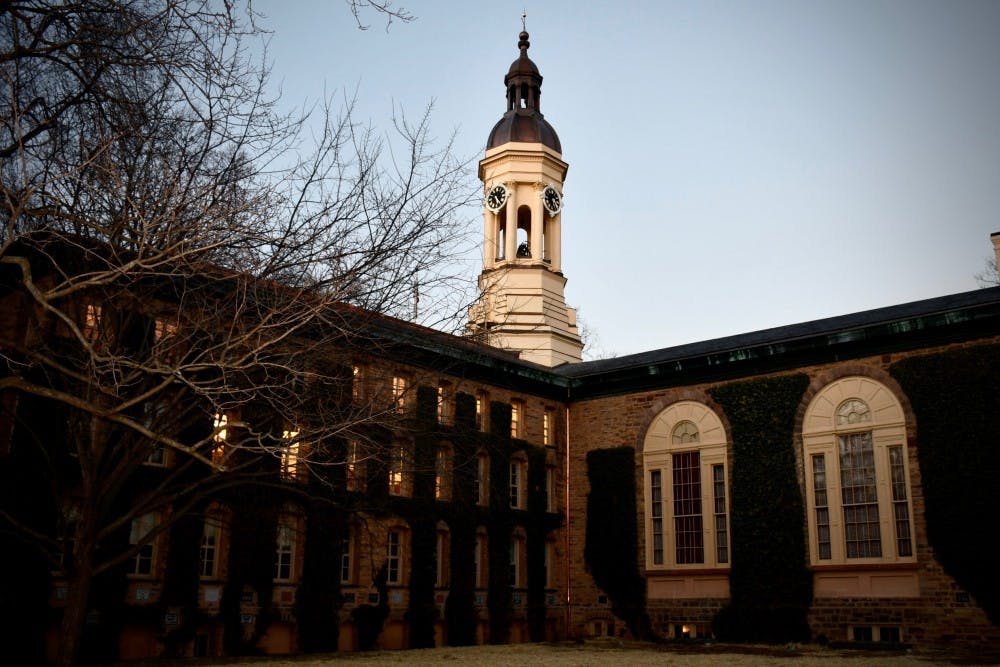On Monday, April 22 — Earth Day — the University announced its commitment to reducing greenhouse gas emissions to net zero by 2046 through its 2019 Sustainability Action Plan, which outlines a framework for increasing conservation efforts on campus through and beyond the year 2026. The second of its kind, the 2019 plan reflects on the initial 2008 Sustainability Action Plan and plots a course to furthering the University’s commitment to environmentalism.
For the next nine years, the plan highlights seven key “action areas.” Apart from reducing greenhouse gas emissions to net zero by 2046, the University also aims to reduce campus-wide and per-person water usage, enhance storm-water management through reducing runoff and increasing surface water quality, develop integrative designs for future campus buildings, cultivate healthier ecosystems and habitats across campus, nearly double the number of commuters using transportation other than single-occupancy vehicles by mid-century, and reduce waste while purchasing more sustainably.
The plan also offers specific numeric targets for 2026 and 2046 for each action area, and gives retrospective data on the University’s progress in each respect since 2008. In all areas except campus water usage — where 30 more million gallons of water were used around campus in 2018 than in 2008 — the University has made affirmative progress toward its articulated targets.
According to Director of the Office of Sustainability Shana Weber, each of the issues outlined has the potential to impact other objectives laid out by the plan.
“If you save energy in one place, you might save water in another place. And so they’re really designed to be intertwined, and not really thought of in silos,” Weber said.
The plan also places a focus on community buy-in, drawing on community members’ experiences to help face sustainability challenges.
“The students, staff, and faculty who shape the academic, physical, and social character of the campus are critical leaders and ambassadors for realizing the culture and sustainability outcomes we seek,” she explained.
In addition to setting new goals, the Sustainability Action Plan reflects on progress made since the first plan was published eleven years ago. Since 2008, the University has purchased 50 percent less paper and 63 percent more local food. However, in that same time frame, the consumer recycling rate on campus has decreased 23 percent, and campus water usage has increased 15 percent.
Claire Wayner ’22, who was one of the students consulted on the plan during the Princeton Sustainability Committee’s monthly lunches with students, faculty, and administrators, believes that by publicizing the plan the University “is saying, yes, sustainability is a priority for the University.”
Wayner is a contributing columnist for The Daily Princetonian.
Wayner, however, believes that the plan could have gone farther, drawing upon her experience sponsoring the Princeton Student Climate Initiative’s ballot referendum on carbon emissions in this year’s Undergraduate Student Government spring elections.
“Maybe the carbon neutrality goal could be more aggressive, which is what a lot of students told us while we were doing the referendum campaigning process,” she said.

While a proponent of the plan, Wayner also felt that a wider range of voices could have been incorporated into the plan’s structuring.
“Only a select few students gave feedback on [the plan],” Wayner said. “The one thing about the plan that I’m disappointed about is that there wasn’t more widespread engagement of students and community members to give feedback.”
Weber believes that student involvement will indeed increase over time as the plan is implemented.
“What we need students to do is help us think about how those strategies evolve over time, because they will have to evolve,“ she said. “We need to set aggressive targets for ourselves, but the work is the path getting there, and that’s where students can really make a big difference.”








